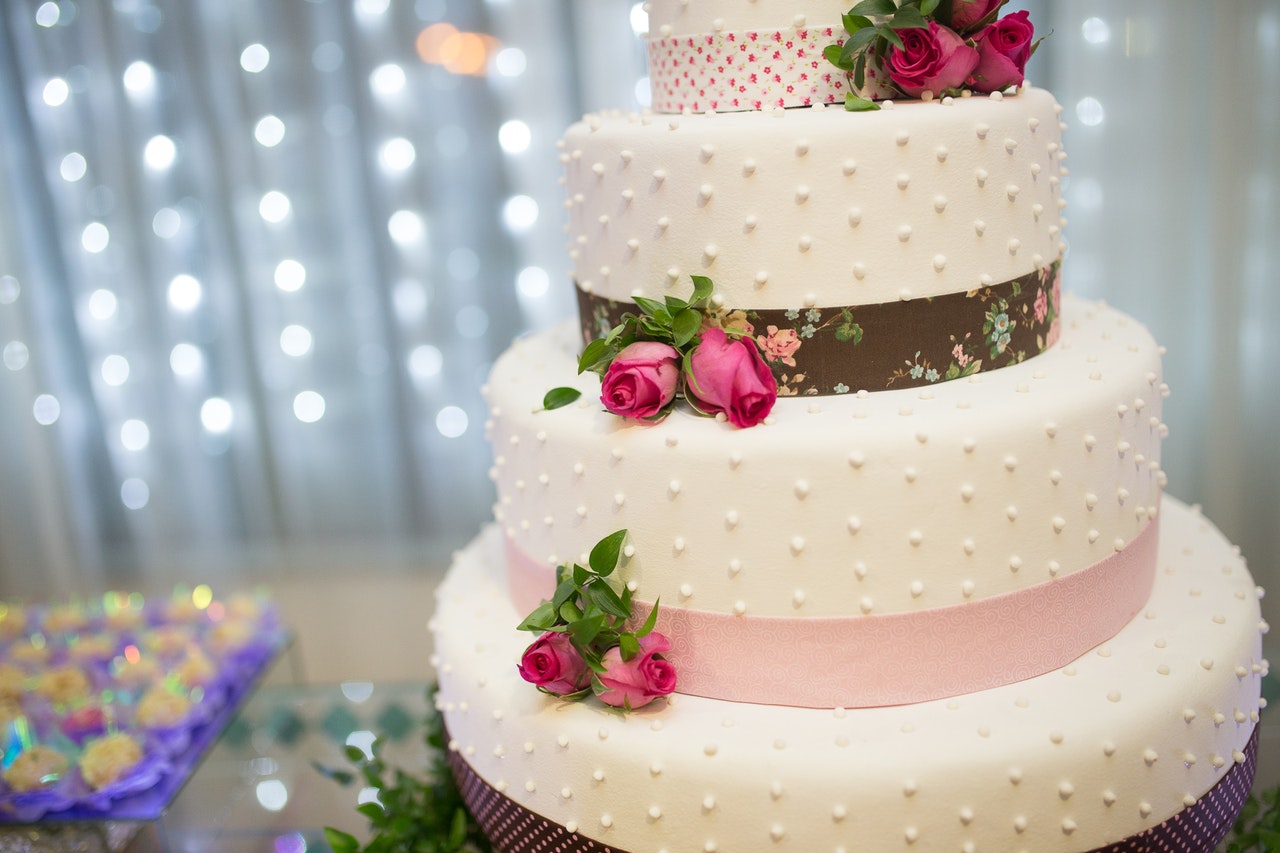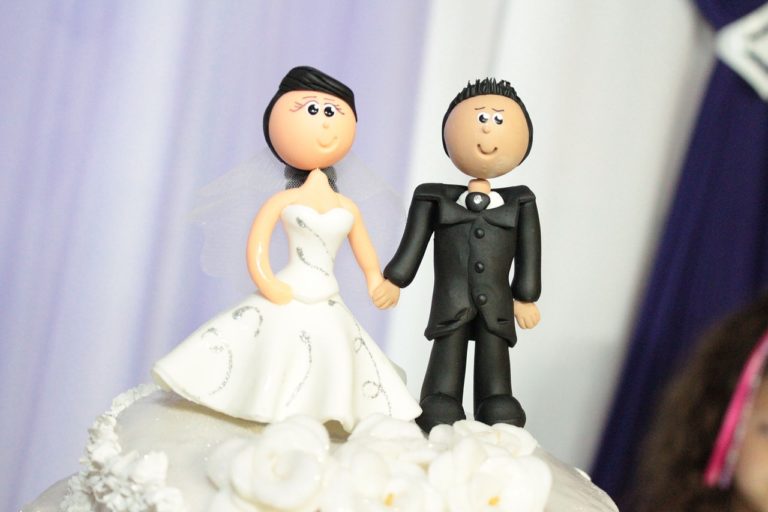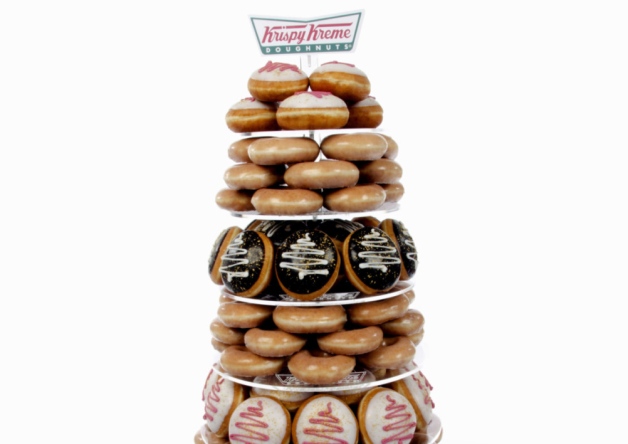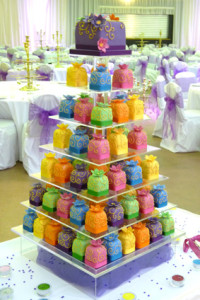Choosing Your Wedding Cake
Advice to consider when choosing your wedding cake. The taste of the cake, wedding cake styles, the size of cake depending on the number of guests and more
The wedding cake is one of the oldest wedding traditions. The custom dates back to the ancient Greeks who served pies made of sesame seeds and the Romans who shared small wheat cakes at their weddings. Cakes containing grains such as wheat, seeds, fruit and nuts are thought to symbolise fertility.
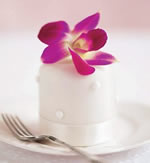 While the bride and her dress play are, quite rightly, the centre of attention at the wedding, the wedding cake should take centre-stage at the reception.
While the bride and her dress play are, quite rightly, the centre of attention at the wedding, the wedding cake should take centre-stage at the reception.
An interesting fact is that the wedding cake is often the second most photographed subject at a the average wedding!
Today’s contemporary wedding cakes can be as modern or traditional as you want them to be and choosing the wedding cake is one of the really fun parts of organising your wedding.
Try before you buy
The way your wedding cake tastes is just as important as the way it looks, so when making an appointment with a cake supplier make it clear that you would like to sample the cakes.
Fruit cake will always be a popular choice, especially with more traditional guests? A clever way of catering for everyone’s tastes, if you’re having a tiered wedding cake, is to have each tier with a different filling.
Consider whether any of your guests have any food allergies or intolerance? Gluten intolerance and nut allergies are the most common and can easily be worked around by asking your wedding cake supplier to make one gluten or nut free tier.
Price
The size of the cake will determine the basic price and then the work on the cake, sugar flowers, intricate decoration etc, will determine the final price. If you are working to a budget, the rule is: the simpler the cake, the less expensive it will be.
One way to keep the cost down is to choose a sponge cake rather than the traditional fruitcake, or perhaps have one sponge cake tier and the other fruitcake? Not only will you be cutting costs, you’ll also be able to please fussy guests.
Styles
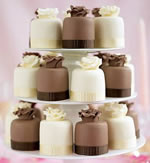 While the traditional style wedding cake remains popular, there are plenty of others to choose from. The contemporary version of a traditional wedding cake might feature coloured icing and detailed sugar decoration to fit the colour scheme and style of the wedding.
While the traditional style wedding cake remains popular, there are plenty of others to choose from. The contemporary version of a traditional wedding cake might feature coloured icing and detailed sugar decoration to fit the colour scheme and style of the wedding.
Nowadays, there are wonderful alternatives to the tiered wedding cake. A fairy cake wedding cake is increasingly popular and means that you can give each guest their own individual cake. You might even decide to ice names on each cake and use them as place cards!
Whichever cake you choose, help your cake maker by taking along any pictures of cakes you like, as well as colour swatches of your wedding outfits if you want a matching colour scheme.
Size
Your cake maker will advise you of the size of cake you need depending on the number of guests but this is a rough guide to the most common choices of cake size:
| Cake Size | No. of Guests | ||||
| 2 Tier | 8″ | 10″ | up to 30 | ||
| 3 Tier | 8″ | 12″ | 16″ | up to 100 | |
| 4 Tier | 6″ | 8″ | 10″ | 14″ | up to 120 |
Ordering Your Cake
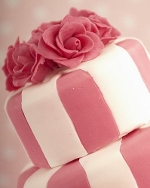 As with most suppliers, the best way to find the perfect wedding cake maker is by personal recommendation.
As with most suppliers, the best way to find the perfect wedding cake maker is by personal recommendation.
Failing this, you can visit wedding fairs and exhibitions in your area where wedding cake designers show examples of their wedding cake designs. It’s important to see photographs of their other work, and to have a taste – a cake that looks fantastic may not necessarily taste as good as it looks!
The Wedding Cake on The Day
On your wedding day, make sure the wedding cake can be seen by all your guests. The wedding cake can be a real focal point of a room so it shouldn’t be hidden away in a corner.
Cutting the Cake
Traditionally the cake should be on display throughout the reception on the top table, the centre of the buffet table or on a separate smaller table or trolley. At a sit-down wedding dinner the cake should be cut just before the dessert is served. At a buffet the cake should be cut nearer the end of the reception celebration.
The custom is for the bride to hold the cake knife while the groom places his hand over hers. Together they cut the first slice and place it on a small plate. Using a small desert fork the groom feeds the bride the first bite and she then feeds him the second which symbolises their commitment to share with and support one another.
The cake can then be cut into portions for each guest to take away or the cake may be served as a dessert. Just don’t forget to save a piece of wedding cake for any guests who were unable to attend on the day!

